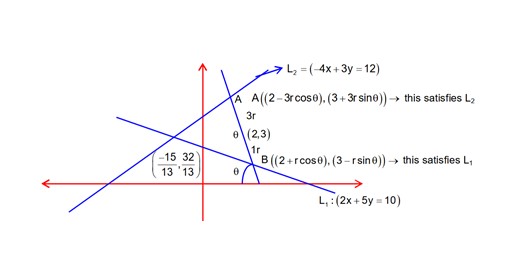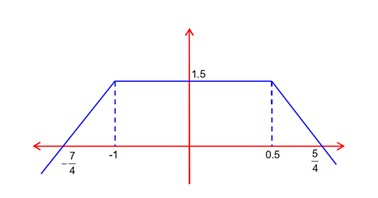Maths
Get insights from 6.5k questions on Maths, answered by students, alumni, and experts. You may also ask and answer any question you like about Maths
Follow Ask QuestionQuestions
Discussions
Active Users
Followers
New answer posted
4 months agoContributor-Level 10
Solution y sec2x =
y sec2 x = 2sec x + c
y = 2 cos x + c cos2x passes C =
y = 2 cos x
New answer posted
4 months agoContributor-Level 10
Replace x by x + k.
From (i) & (ii), f(x + 2k) = f(x).
is periodic with period = 2k.
put x = t + k
New answer posted
4 months agoContributor-Level 10
fog
Not possible as of inequalities give
ex – x < 0, x < 0 (x 1)2 – 1 < 0
Not possible (x – 1 + 1)(x – 1 – 1) < 0
(x)(x – 2) < 0
x
continuous x < 0
Discontinuous at 0
continuous
fog is discontinuous at 0
New answer posted
4 months agoContributor-Level 10
a + a1……an, 100 n arithmetic mean 100
a + n = 33 ……. (i)
7a + 8d = 100…………… (ii)
a + (n + 1)d = 100………………. (iiI)
Solving these equations (i), (ii) & (iii), we get
n = 23 & d =
a = 10
New answer posted
4 months agoContributor-Level 10
(r + 1)th term for expansion of

r = y
= 11Cy
for term to be independent of x, power of x should be zero.
(3x – 2y) = 0 (when 1 is multiplied).
3x + 3y = 33
y =
3x – 2y + 2 = 0 where (-x2) is multiplied).
3x + 3y = 33
y = 7, x = 4
coefficient of term independent of x.
Taking an Exam? Selecting a College?
Get authentic answers from experts, students and alumni that you won't find anywhere else
Sign Up on ShikshaOn Shiksha, get access to
- 65k Colleges
- 1.2k Exams
- 679k Reviews
- 1800k Answers


